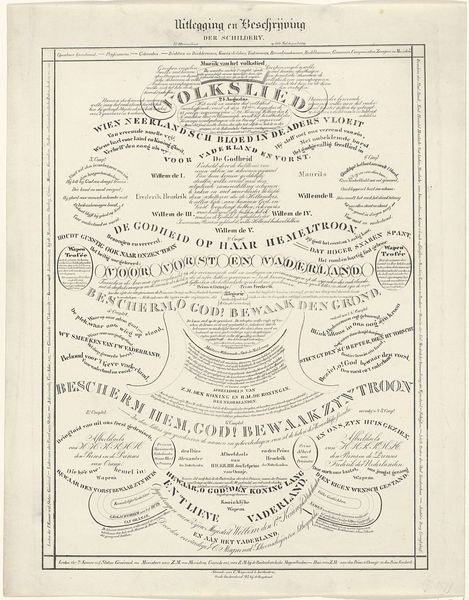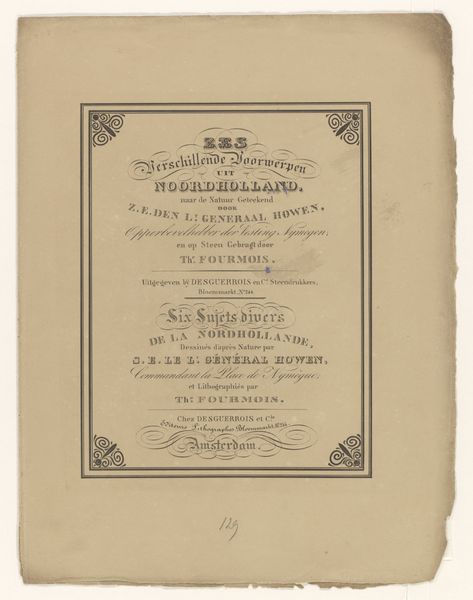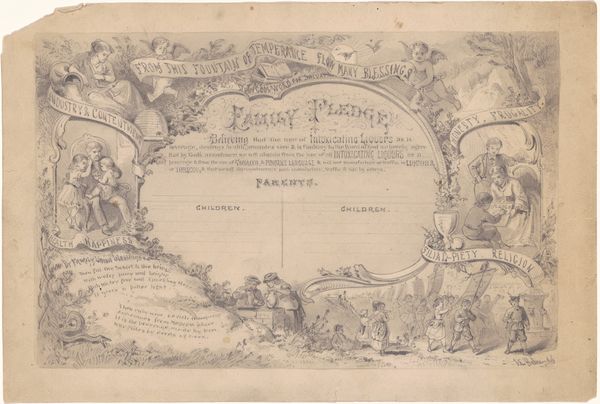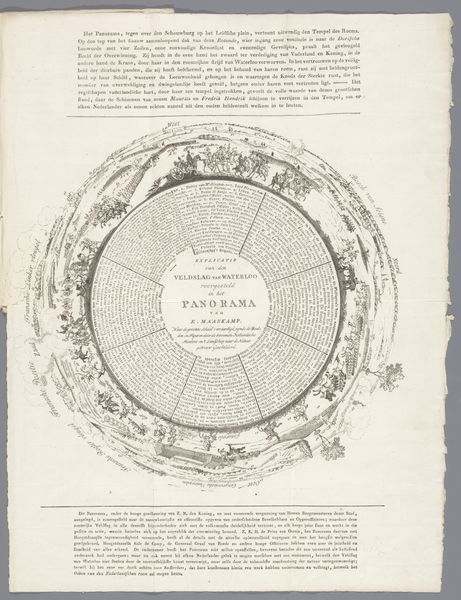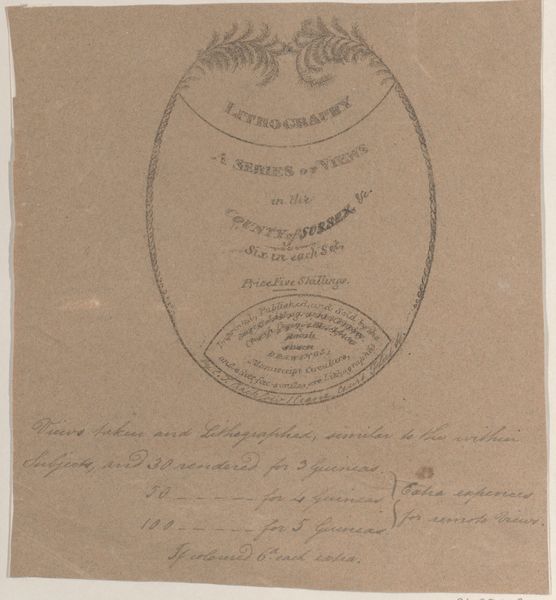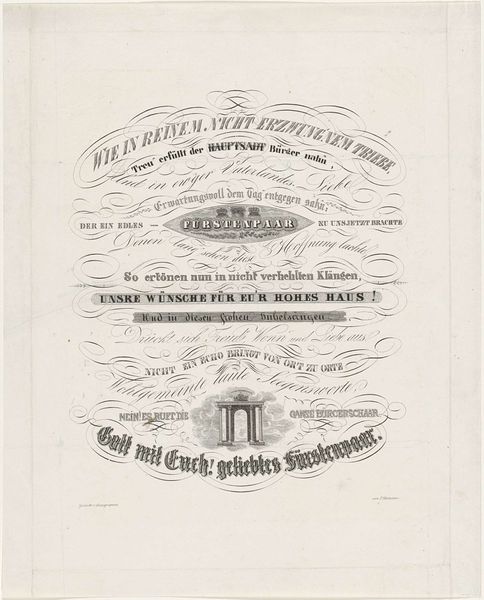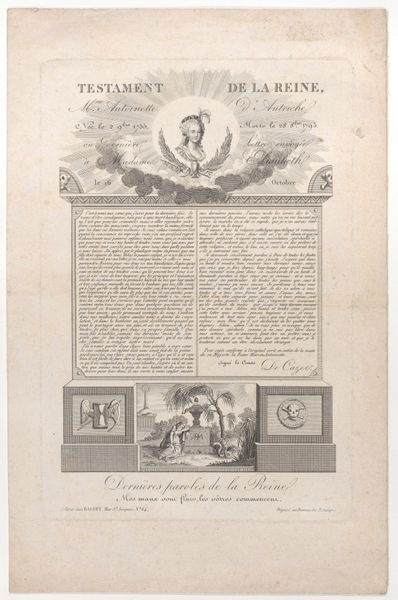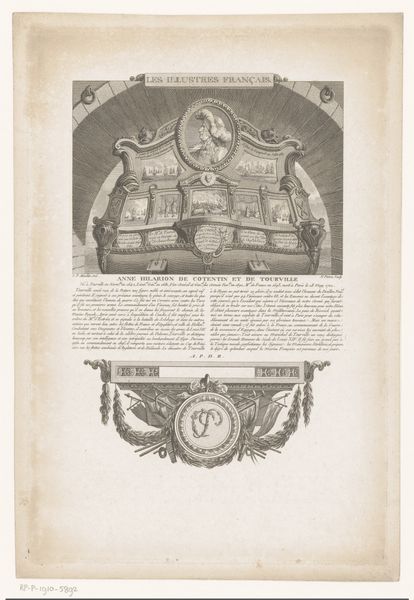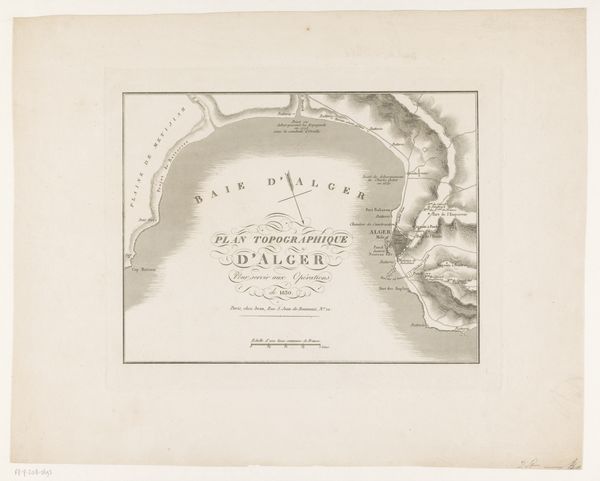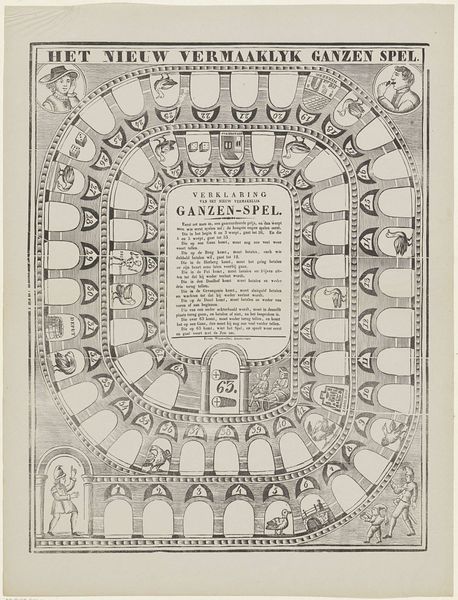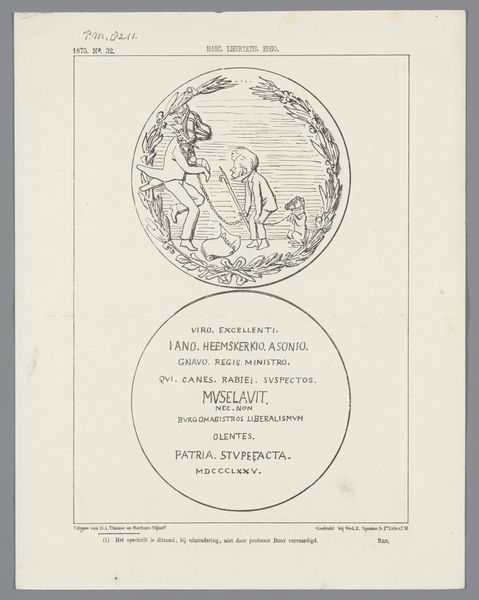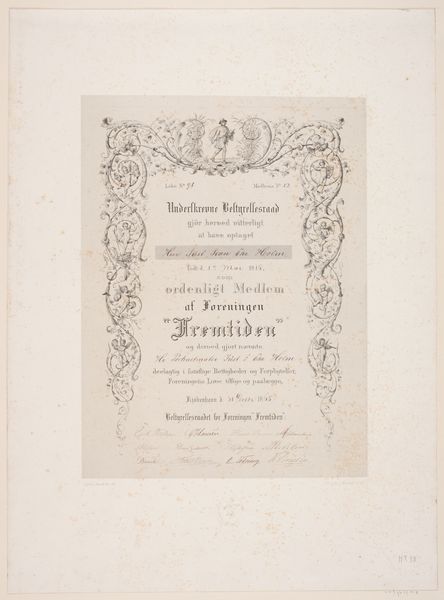
drawing, textile, paper, ink, pen
#
portrait
#
drawing
#
old engraving style
#
textile
#
paper
#
ink
#
ink drawing experimentation
#
sketchbook drawing
#
pen
#
decorative-art
#
calligraphy
Dimensions: height 519 mm, width 405 mm
Copyright: Rijks Museum: Open Domain
Curator: This piece, "Nieuwjaarsbrief," a 19th-century drawing in ink and textile by Joseph Payer, really draws attention to the power of the written word as an art form, doesn't it? It’s less about visual representation and more about the elaborate display of language. What immediately strikes you? Editor: It definitely has an impressive level of detail! All those swirling lines of script are so intricate. What’s also curious is that I see textile listed among the materials used in making the piece. How do you interpret that? Curator: The inclusion of textile is key. Notice the type of paper—it suggests a more industrial mode of production versus handmade parchment, indicating how printed language itself was becoming a mass-produced commodity. The elaborate script, typically associated with the upper classes, is juxtaposed with materials suggesting wider consumption. This speaks to a societal shift, doesn’t it? Who has access to language, and on what materials is it displayed? Editor: So you’re saying the contrast between the decorative calligraphy and the paper itself reveals something about the changing social landscape? Like the traditional and the modern colliding? Curator: Precisely! Consider the labor involved. A meticulous process by skilled laborers transformed mundane materials into an ornate object. The script isn't just text; it's a performance of skill, class, and power enacted through ink on paper. Can you imagine the hours of labour producing that degree of ornament on each document? Editor: It makes you wonder who commissioned it and what purpose it served beyond simply conveying information. Thanks, I’m starting to see it more as a historical document about material culture, than only art. Curator: Exactly. Analyzing the materials shifts our focus from the image as a singular artistic expression to a tangible artifact shaped by historical, social, and economic forces. What do you take away from that analysis of the materiality of this artwork? Editor: I’ll definitely pay more attention to the "how" and "why" behind art making. Now I want to examine more art considering the labor, socioeconomic factors, and the cultural conditions of its creation and distribution. Curator: A perfect starting point! Now you have to think about its relation to our moment as well: what labor, materials, modes of production, and systems of consumption affect our experience of art today?
Comments
No comments
Be the first to comment and join the conversation on the ultimate creative platform.
